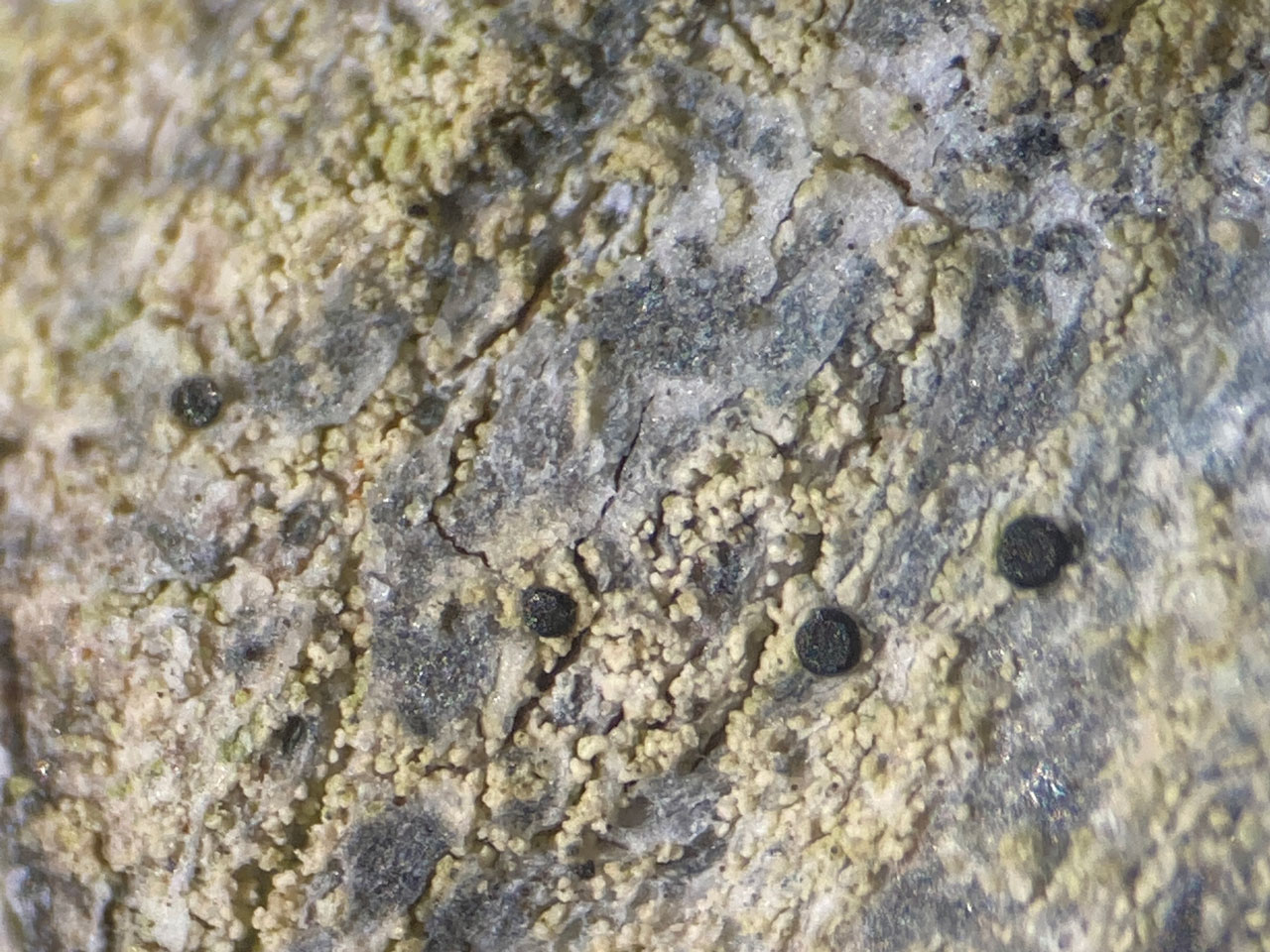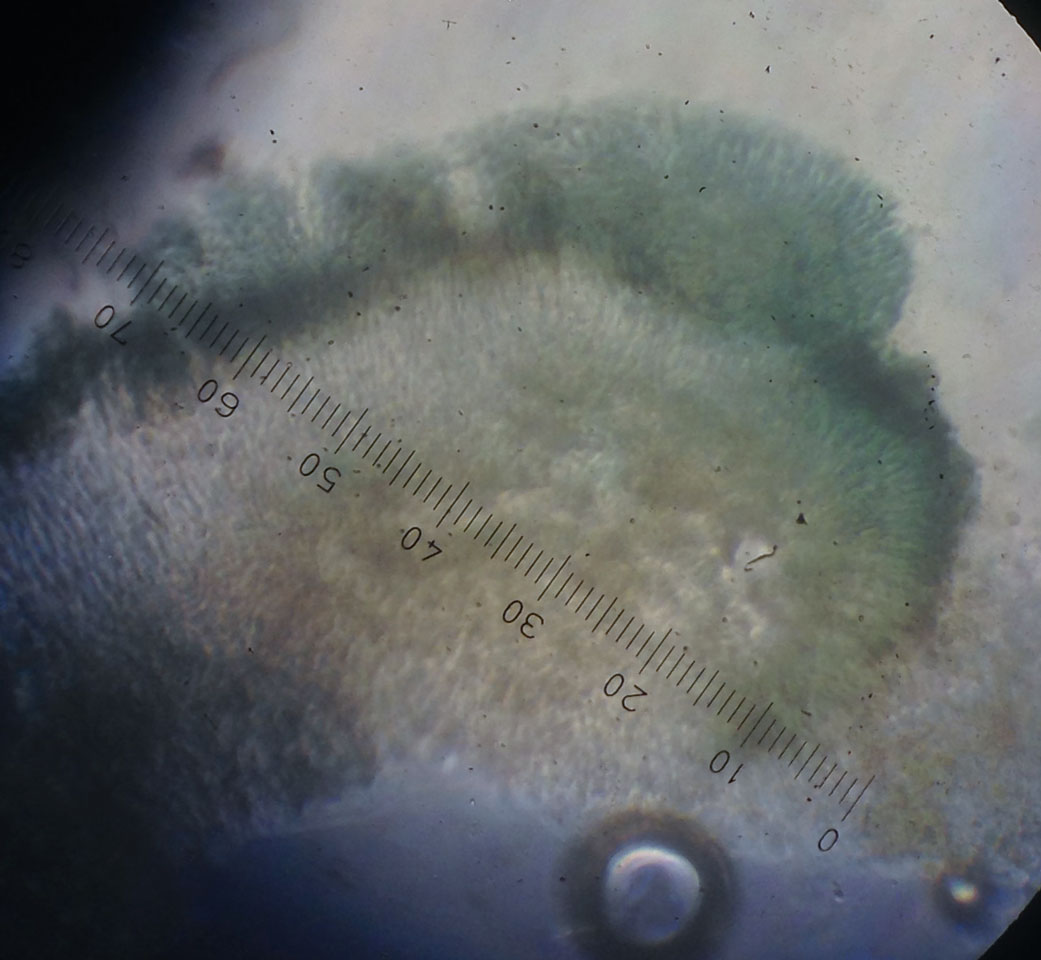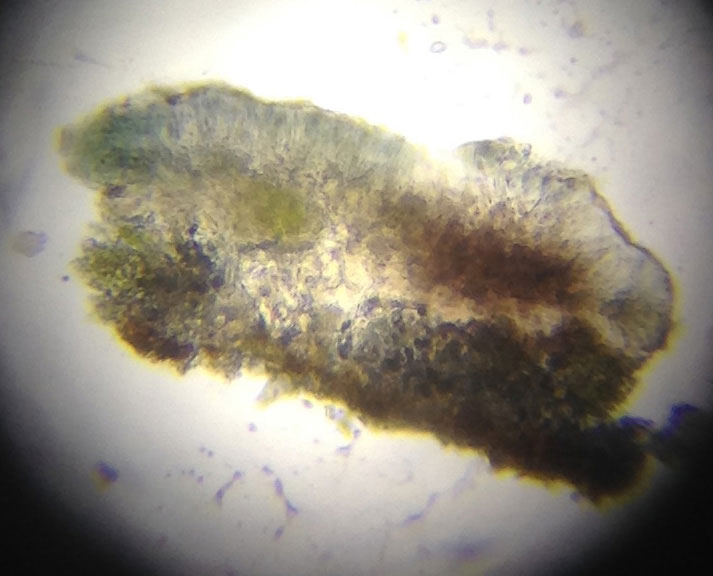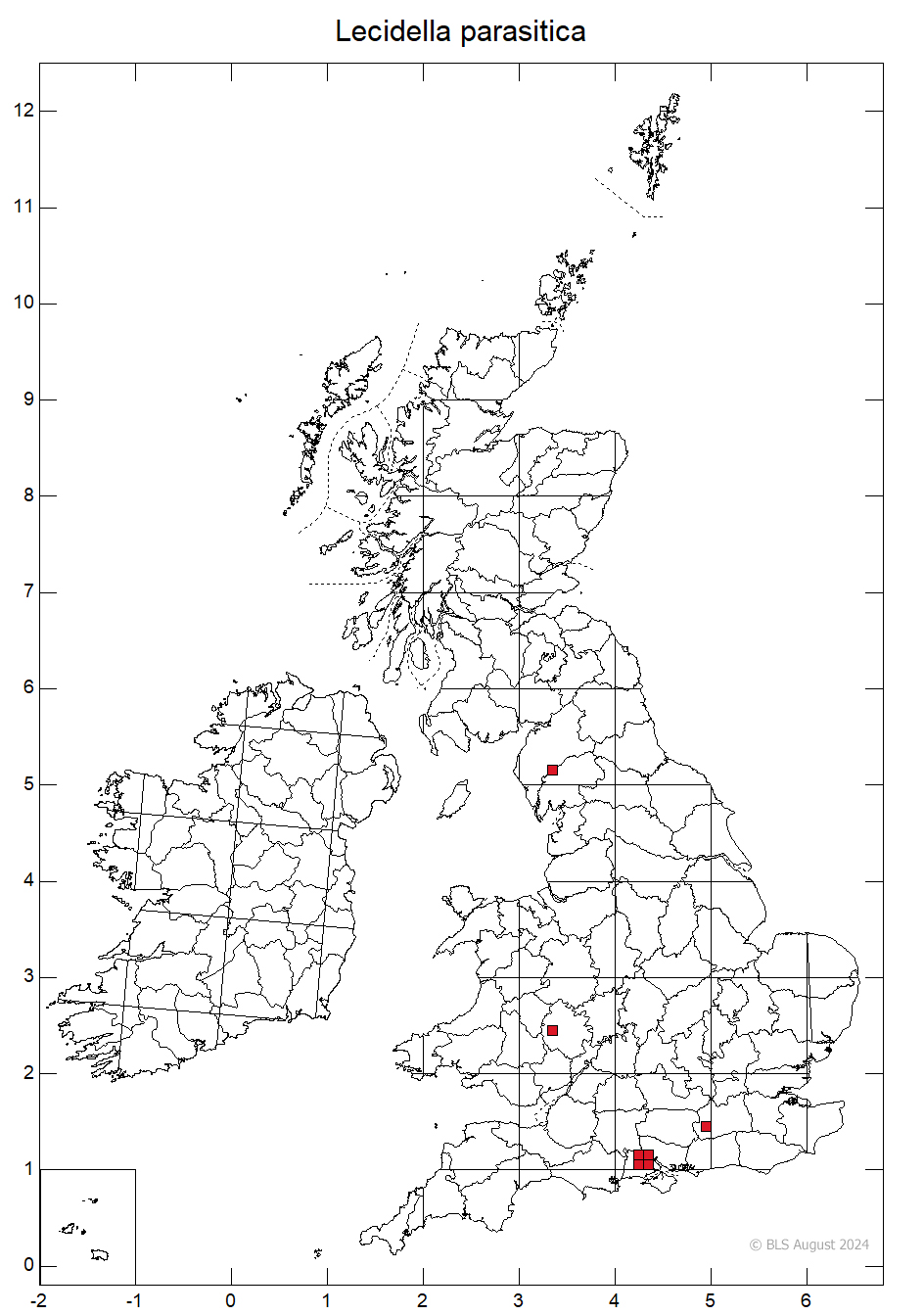A lichenicolous fungus that develops black apothecia on the thallus of Pyrrhospora quernea, usually with limited impact on the host but heavy infections may darken the thallus. Easily overlooked as the apothecia of the host, but these typically have a reddish tinge on the edges when smaller. Internally the apothecia are very different, with P. quernea especially distinctive in the reddish brown granules, that dissolve in K giving a purplish effusion. Lecidella parasitica appears rare and so far confined to Pyrrhospora quernea growing on older trees in pasture woodland and parklands.
Immersed in the thallus of Pyrrhospora quernea, usually with limited impact on the host but heavy infections may darken the thallus. Apothecia 0.15–0.5 (–0.6) mm diam., black, some a bit distorted but mainly flat; thalline margin absent, exciple green-yellow internally, composed of radiating hyphae; epithecium blue, K+ intensifying to a degree; paraphyses lax, rather broad (to ca 4 µm diam.), apices barely swollen; hymenium ca 40 µm tall,pale straw, often with reddish and blue patches; hypothecium pale yellow to brown, K–. Asci Lecanora-type, 8-spored. Ascospores aseptate, (7–) 10–12 × (4–) 6–7 (–8) µm, ellipsoidal to broadly ellipsoidal, some more pointed at one end, thick-walled.
Easily overlooked as immature apothecia of Pyrrhospora quernea, but can be detected by their small size, pure black colour (no trace of reddish pigmentation) and the disks remaining flat. Apothecia may develop but do not always appear to produce ascospores.
In Fletcher et al. (2009), this species keys out as Lecidella pulveracea, if the parasitic nature of the fungus was not realised. Compared with this poorly known species, L. parasitica has smaller apothecia and ascospores and a more colourful hymenium.
Parasitic on Pyrrhospora quernea, on veteran Oak and Beech and on Oak lignum on fallen trees in parkland and old growth pasture woodland.

By 2024 recorded thinly in Hampshire (New Forest), Surrey (Hampton Park), Hereford (Moccas Park), Cardiganshire, Brecon (Cwm yr Esgob) and Cumbria (Glencoyne Park). Likely overlooked elsewhere but appears rare.
So far only recorded on Pyrrhospora quernea growing on older Oaks in open well light high quality pasture woodland and parkland habitats, and appears rare, so potentially threatened.
Cannon, P., Malíček, J., Ivanovich, C., Printzen, C., Aptroot, A., Coppins, B., Sanderson, N., Simkin, J. & Yahr, R. (2022). Lecanorales: Lecanoraceae, including the genera Ameliella, Bryonora, Carbonea, Claurouxia, Clauzadeana, Glaucomaria, Japewia, Japewiella, Lecanora, Lecidella, Miriquidica, Myriolecis, Palicella, Protoparmeliopsis, Pyrrhospora and Traponora. Revisions of British and Irish Lichens 25: 1-83.
Fletcher, A., Purvis, O.W. & James, P.W. (2009). Lecidella. In Lichens of Great Britain and Ireland (Smith, C.W., Aptroot, A., Coppins, B.J., Fletcher, A., Gilbert, O.L., James, P.W. & Wolseley, P.A. eds): 519–525. London: British Lichen Society.
Text by Neil A Sanderson, based on Cannon et al (2022)







